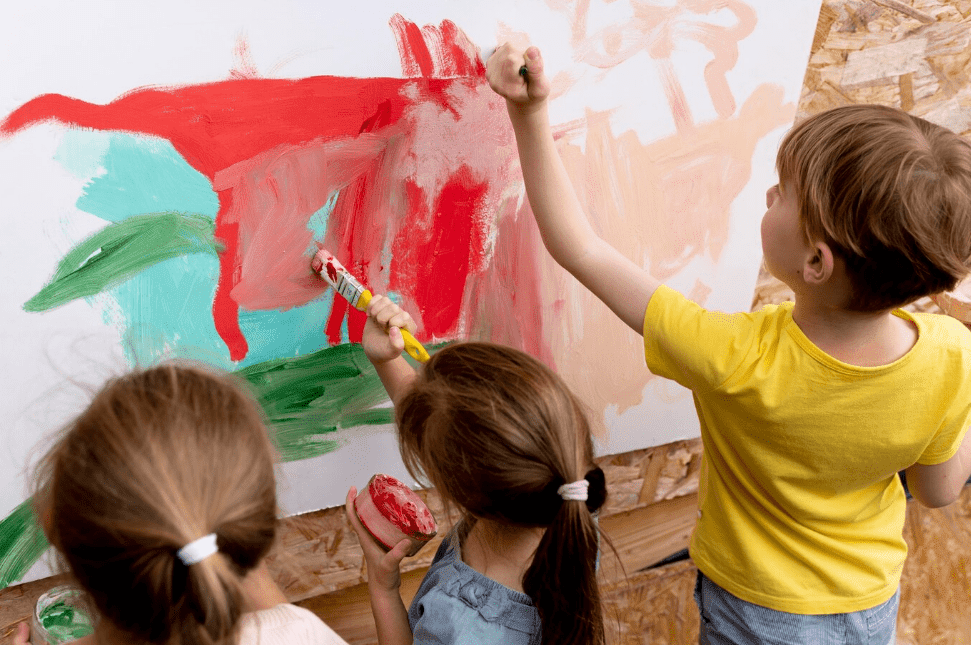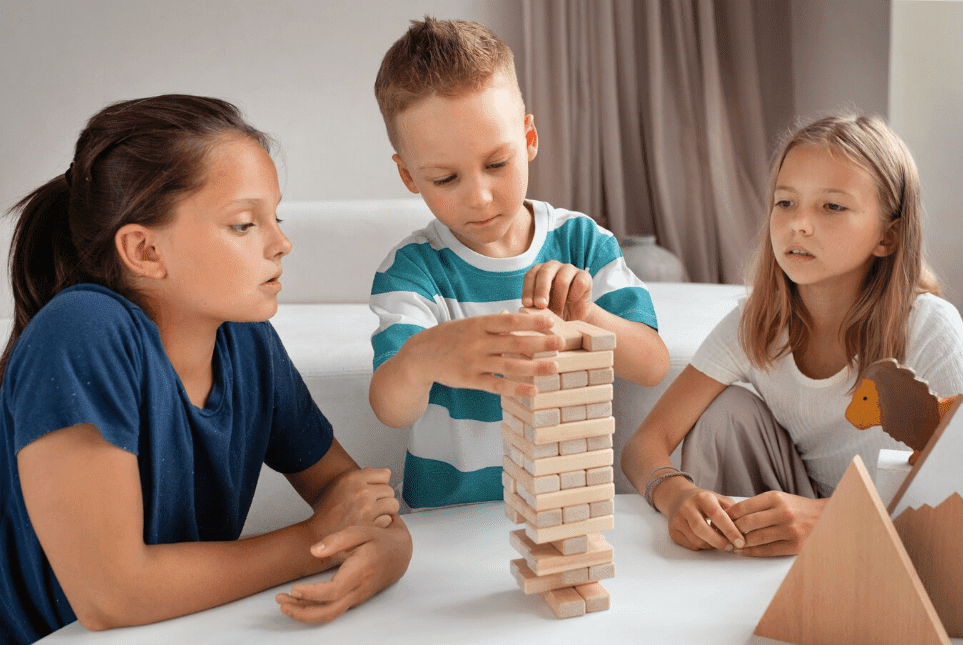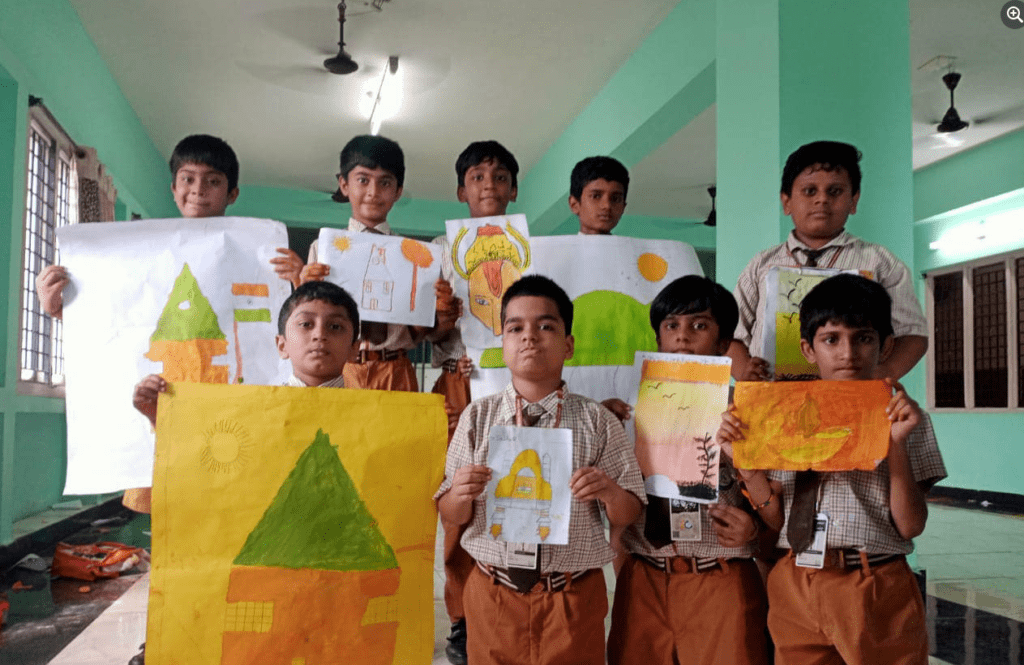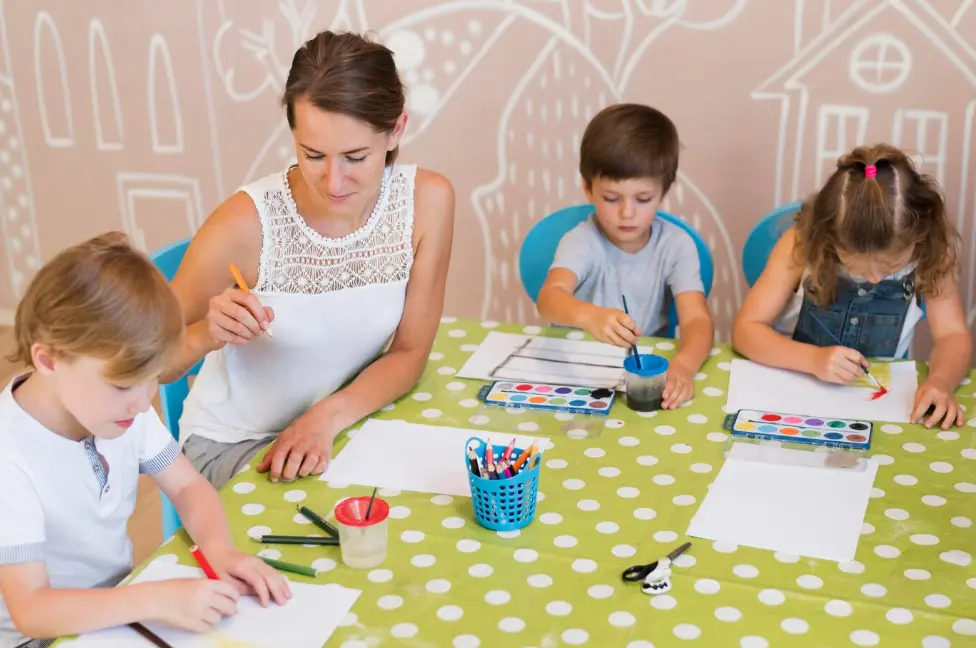In today’s fast-paced world, engaging children in productive and enjoyable activities during their free time is essential. Indoor extracurricular activities not only keep them entertained but also aid in their cognitive, physical, and emotional development.
For activities including school students, especially those in Dr. Kishore’s Ratnam primary schools in Tirupati, Andhra Pradesh, fostering a love for learning and creativity is crucial.
Age-Appropriate Indoor Activities for School Students
Here are five engaging indoor activities categorized according to age groups that cater to the diverse interests and developmental stages of children.

Indoor Activities for 1-3 Year Old Kids
- Sensory Bins: Sensory bins are a fantastic way to engage the senses of toddlers. Fill a large container with materials like rice, dried beans, water beads, or sand. Add toys, scoops, and containers for scooping and pouring. This activity helps in sensory exploration, fine motor skill development, and imaginative play.
- Mess-Free Painting: Create a mess-free painting experience for little ones by placing paper inside a large resealable plastic bag. Squeeze in different colored paints, seal the bag, and let the child explore mixing colors and creating shapes without any mess. It allows them to express creativity while containing the potential chaos of traditional painting.
- Music and Movement: Turn on some upbeat music and encourage toddlers to dance and move freely. Use scarves, ribbons, or simple musical instruments like shakers to enhance the experience. This activity promotes gross motor skills, coordination, and emotional expression through movement.
- Water Play: Introduce water-based activities using safe containers. Include items like plastic cups, spoons, and small floating toys. This sensory activity aids in hand-eye coordination and understanding water properties.
- Stacking and Sorting: Provide soft blocks or toys of varying sizes, shapes, and colors. Encourage toddlers to stack and sort them based on attributes like color or size, enhancing fine motor skills and cognitive abilities.
- Musical Instruments Exploration: Offer a variety of child-friendly musical instruments such as drums, xylophones, or shakers. Encourage experimentation with sounds, rhythm, and movement.

Indoor Activities for 4-6 Year Old Kids
- DIY Science Experiments: Engage young minds with simple and safe science experiments using household items. Create a volcano with baking soda and vinegar, make slime with glue and borax, or explore buoyancy with a sink-or-float experiment. These activities encourage curiosity, critical thinking, and understanding of basic scientific concepts.
- Storytelling and Puppet Shows: Encourage creativity and language development by letting kids create their own stories. Provide them with puppets or allow them to make their own using socks or paper bags. They can then perform their stories, enhancing their storytelling skills and boosting confidence.
- Building and Construction: Give children building blocks, Legos, or other construction toys and let their imagination run wild. This activity promotes problem-solving, spatial awareness, and fine motor skills. Encourage them to build structures, vehicles, or anything they can imagine.
- DIY Obstacle Course: Design a simple obstacle course using household items like cushions, hula hoops, or cardboard boxes. This activity promotes physical activity, problem-solving, and creativity.
- Shadow Play: Use a flashlight and various objects to create shadows on a wall or a sheet. Children can experiment with positioning objects to create different shapes and sizes of shadows, exploring light and shadow concepts.
- Indoor Camping: Set up a makeshift tent using blankets and cushions. Engage kids in storytelling, pretend camping activities, and shadow puppetry within their indoor camping space.

Indoor Activities for 7-9 Year Old Kids
- Arts and Crafts: Provide a variety of art supplies such as colored pencils, markers, paints, clay, or beads. Let older children explore their artistic talents by creating drawings, paintings, sculptures, or jewelry. Arts and crafts foster creativity, patience, and fine motor skills.
- Board Games and Puzzles: Introduce board games or puzzles that are suitable for their age group. Games like Scrabble, Monopoly, or puzzles with increasing difficulty levels challenge children’s cognitive abilities, strategy, and critical thinking skills while also encouraging social interaction.
- Coding and Technology Exploration: Introduce basic coding concepts through kid-friendly coding platforms or apps. There are various resources available online that make learning to code fun and interactive for children. This activity promotes problem-solving, and logical thinking, and introduces them to essential skills for the digital age.
- DIY Science Kits: Create personalized science kits with materials for experiments like making a volcano, growing crystals, or creating homemade slime. Encourage them to conduct experiments and note observations.
- Creative Writing Prompts: Provide writing prompts or story starters to spark their imagination. Encourage them to write short stories, poems, or create comic strips, fostering language and storytelling skills.
- DIY Stop Motion Animation: Utilize smartphones or tablets to teach kids the basics of stop motion animation. Let them create short movies using toys or clay figures, enhancing their creativity and technological skills.
These engaging indoor extracurricular activities not only entertain children but also contribute significantly to their holistic development. For parents and schools in Tirupati and across Andhra Pradesh, integrating such activities into the daily routine can enhance children’s learning experiences and nurture their talents and abilities.
Remember, the key is to provide a balance between structured learning and unstructured play to foster a well-rounded development in children of all ages


